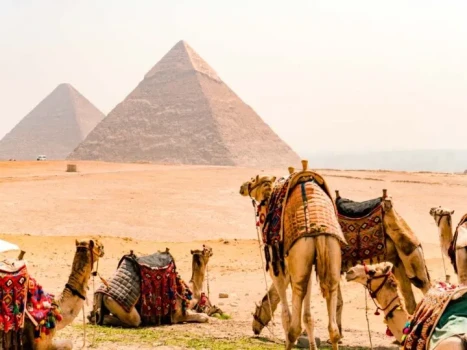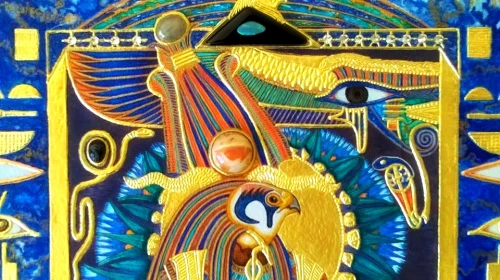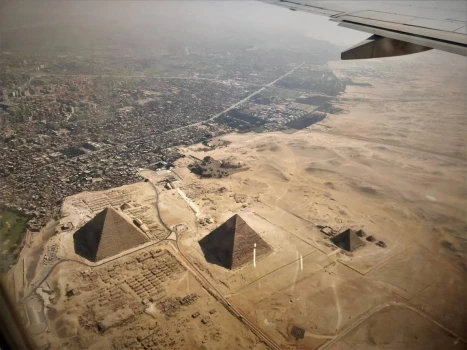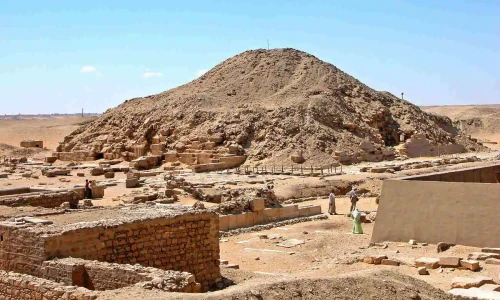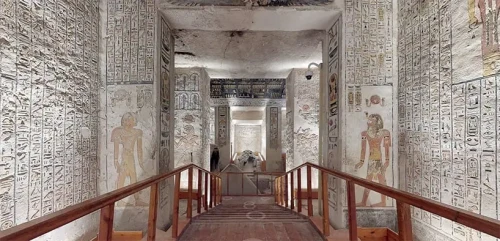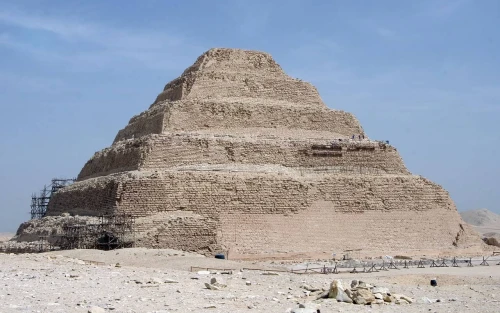
(DJOSER)
The second king of Dynasty III, Zoser is best known for his funerary monument, the Step pyramid at Sakkara. Zoser was considered a living god and was worshipped as the incarnation of Horus the sun god. Stonemasons mastered the art of quarrying and moving stone by trial and error but soon had the technology to build a grand funerary monument worthy of their king. Zoser's Step Pyramid was the first large stone building in the world and the prototype for all other pyramids. Beneath the pyramid are a maze of shafts and tunnels that lead to the burial chamber, but Zoser's mummy was never found.
A Zoser figure is located in a tiny room called a Serdab, which is Arabic meaning basement, on the Step Pyramid's north side. The statue's now-missing inlaid eyes, which were crafted from rock crystal, alabaster, and obsidian, gave it a surreal illusion of lifelikeness. To enable the statue to perpetually stare out onto his pyramid complex, two tiny holes have been cut into the north wall. The Zoser statue's original remains are kept at the Egyptian Museum in Cairo, and a reproduction is presently on display there.
Zoser extended Egypt's southern border to Aswan and east into the Sinai Peninsula in the search for turquoise, a semiprecious stone highly prized in the Old Kingdom. Turquoise was popular throughout Egypt's history, but the only examples we have today are the Old Kingdom butterfly bracelets from Queen Hetepheres's tomb, now in the Egyptian Museum in Cairo. An inscription at Sehel Island (south of Aswan) claims that Zoser gave them land south of Aswan. Interestingly, the priests of Isis at the Philae Temple claim that Zoser gave the land to them.
Conclusion
The Step Pyramid of Djoser is a main attraction for anyone interested in history and archaeology during any Egypt tours. It is a unique architectural achievement and a testament to the skill and ingenuity of the ancient Egyptians. The pyramid complex offers a glimpse into the lives and beliefs of the ancient Egyptians and its historical significance makes it a prominent attraction in Egypt.
 English
English
 Spain
Spain

